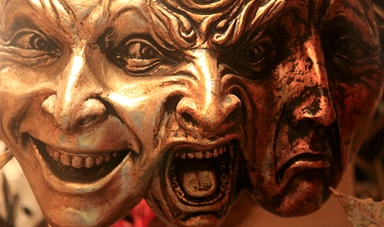Loading component...
At a glance
Are you an extrovert or an introvert? What about a logical versus an emotional thinker? If you take the Myers-Briggs Type Indicator (MBTI), the world’s most popular psychometric test, you might just find out.
More than 2.5 million people a year take the test globally. Some 89 of the Fortune 100 companies in the US use it as a human resources tool, and it is used widely across Australia and Asia. Its history stretches back over seven decades. Yet despite its immense popularity, professional psychologists have continually questioned its validity.
So, how useful is this test?
How it all began
The MBTI test categorises participants into one of 16 personality types. Part-time crime novelist Isabel Briggs Myers developed the MBTI test with her mother, Katharine Cook Briggs, in their sitting room in Pennsylvania in 1943. They based it loosely on Swiss psychotherapist Dr Carl Jung’s writings about psychological types.
"Doing behavioural interviews ... will more likely bring out one’s personality."
Even though this mother-and-daughter tool was never scientifically validated, the pair sold it to a family friend, Edward Hay, who was one of the first management consultants in the US. Because it was one of the original personality tests, MBTI’s popularity grew exponentially among government, defence and corporate sectors across the country and then internationally over the ensuing decades.
Questioning its reliability
Doubts over the test’s validity start with Jung, whose techniques are widely viewed as lacking scientific rigour – for instance, he did no controlled experiments. Perhaps a greater threat to MBTI’s credibility, though, is its reliability.
After doing the more than half of those who undertake the MBTI again in five weeks’ time come up with a different and often opposing result, says Professor David Pittenger, interim dean of the Graduate College at Marshall University in West Virginia, who has written extensively about the test. This questions the “retest-test reliability”, and he warns HR departments to exercise “extreme caution” when using it.
Pittenger also argues that the test stereotypes individuals.
“MBTI attempts to force the complexities of human personality into an artificial and limiting classification scheme,” he says.
“The focus on the ‘typing’ of people reduces the attention paid to their unique qualities and potential.”
Peter Wilson FCPA, national president and chairman of the Australian Human Resources Institute, has taken the test about 15 times (with differing results), and he agrees with Pittenger. Its third failing, Wilson adds, is that it is quite easy to “game” – to give your potential employer or manager the answers you think they want and not the ones that reflect your true personality.
Dr Betina Szkudlarek, senior lecturer in cross-cultural management at the University of Sydney, agrees with Wilson that the test should not be used for recruitment purposes.
“Doing behavioural interviews, where you ask a person to respond to a real-life situation or even doing an actual case-based simulation with other applicants they have to work with, will more likely bring out one’s personality,” says Szkudlarek.
Powerful tool for team building
In Myers-Briggs defence, Wilson notes that while there are other psychometric tests, none is as straightforward and easy to administer to assess group dynamics and to gauge employees’ self-awareness.
“There are other tests with more forensic vigour,” he says, “but there is none better or more powerful than Myers-Briggs [for] understanding personalities when you are getting teams to work together.”
The things that make us unique
The Myers-Briggs Type Indicator is underpinned by psychotherapist Carl Jung’s theory that people experience life through four main psychological functions – sensation, intuition, feeling and thinking – and that we all have specific preferences in the way we interpret and react to the world around us.
The result is 16 distinctive personality types, each depicted by a four-letter code. For instance:
- ENTJ: extraversion (E), intuition (N), thinking (T), judging (J)
- ISFP: introversion (I), sensing (S), feeling (F), perceiving (P)

